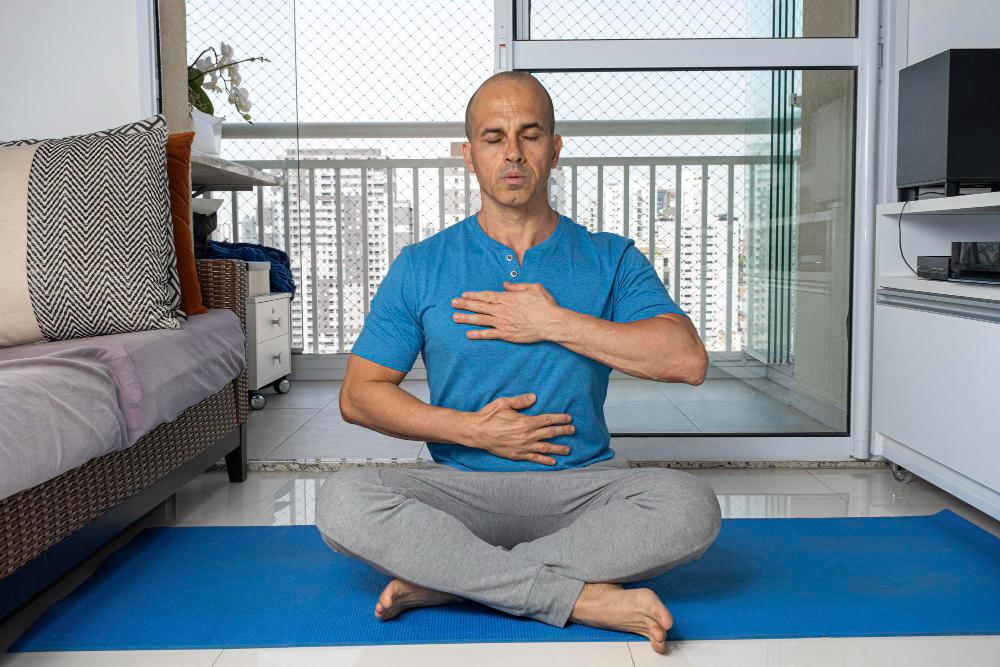Breathing Techniques to Calm Anxiety & Activate Your Nervous System: Anxiety and stress can be overwhelming. They can make you feel like your body is on high alert, even when safe. The good news is that your body has tools to help calm your nervous system.
In this post, you will learn three breathing techniques that can help activate your body’s rest system, which is responsible for relaxation, digestion, and healing.
These simple but powerful Powerful Breathing Techniques can:
- Regulate stress
- Reduce anxiety
- Increase focus and emotional balance
If you experience chronic stress or panic or are overwhelmed every day, these techniques can help you feel calmer and retrain your body and mind.
Why Breathing Matters for Anxiety
When stressed, our body responds by activating the sympathetic nervous system. This causes us to either fight, run away, or freeze. As a result, we may experience a fast heartbeat, shallow breathing, and increased feelings of anxiety.
Breathing techniques promote transitioning to parasympathetic mode, known as “rest-and-digest.” This process calms your stress response and signals to your brain that you are safe.
Technique 1: 4-7-8 Breathing
Balance and Reset Your Nervous System
How to Do It:
- Inhale through your nose for 4 seconds
- Hold your breath for 7 seconds
- Exhale slowly through your mouth for 8 seconds
- Repeat for several rounds
This method helps lower your heart rate and calm your racing mind. It might feel strange at first, but be patient. You are helping your body relax.
Technique 2: The Physiological Sigh
A Natural Stress Reliever
How to Do It:
- Take a deep breath in through your nose
- Then take a quick second breath in to “top off” your lungs
- Exhale slowly and thoroughly through your mouth
This technique mimics how your body naturally sighs. Sighing helps reset the carbon dioxide levels in your blood and quickly reduces stress.
Technique 3: Rhythmic Diaphragmatic Breathing
Train Your Brain for Calm
How to Do It:
- Breathe in slowly and deeply into your belly
- Extend your exhale longer than your inhale
- Keep your breath smooth, even, and rhythmic
When you breathe out, you activate the parasympathetic system. Diaphragmatic breathing helps strengthen the brain circuits that control self-regulation and emotional resilience.
Rhythmic breathing copies the steady heartbeat you hear in the womb. This heartbeat is one of the earliest ways your brain learns to feel calm and connected.
Make It a Habit: Breathe Proactively
Don’t wait until you feel overwhelmed. Instead, try to add these practices to your daily routine:
- Before starting work
- After a stressful conversation
- Before bed
- First thing in the morning
Regular practice helps improve your nervous system’s flexibility and builds emotional strength over time.
🎥 Watch the full video here for guided Breathing with Alistair Gordon, Adjunct Professor of Counselling Psychology and Registered Clinical Counsellor:
Explore More Free Tools & Resources:
🌐 Website: https://wellspringcounselling.ca
📘 Free Self-Help Program: https://wellspringcounselling.ca/self-help-program/
🧠 Read the Blog: https://wellspringcounselling.ca/blog/
🎥 YouTube Channel: https://www.youtube.com/@wellspringcounselling
💖 Patreon: https://www.patreon.com/c/alistairgordon
☕ Buy Me a Coffee: https://buymeacoffee.com/alistairgordon
Therapy & Coaching
Offering therapy in BC (Canada) and personal growth coaching worldwide.
Book a free consultation Now!




